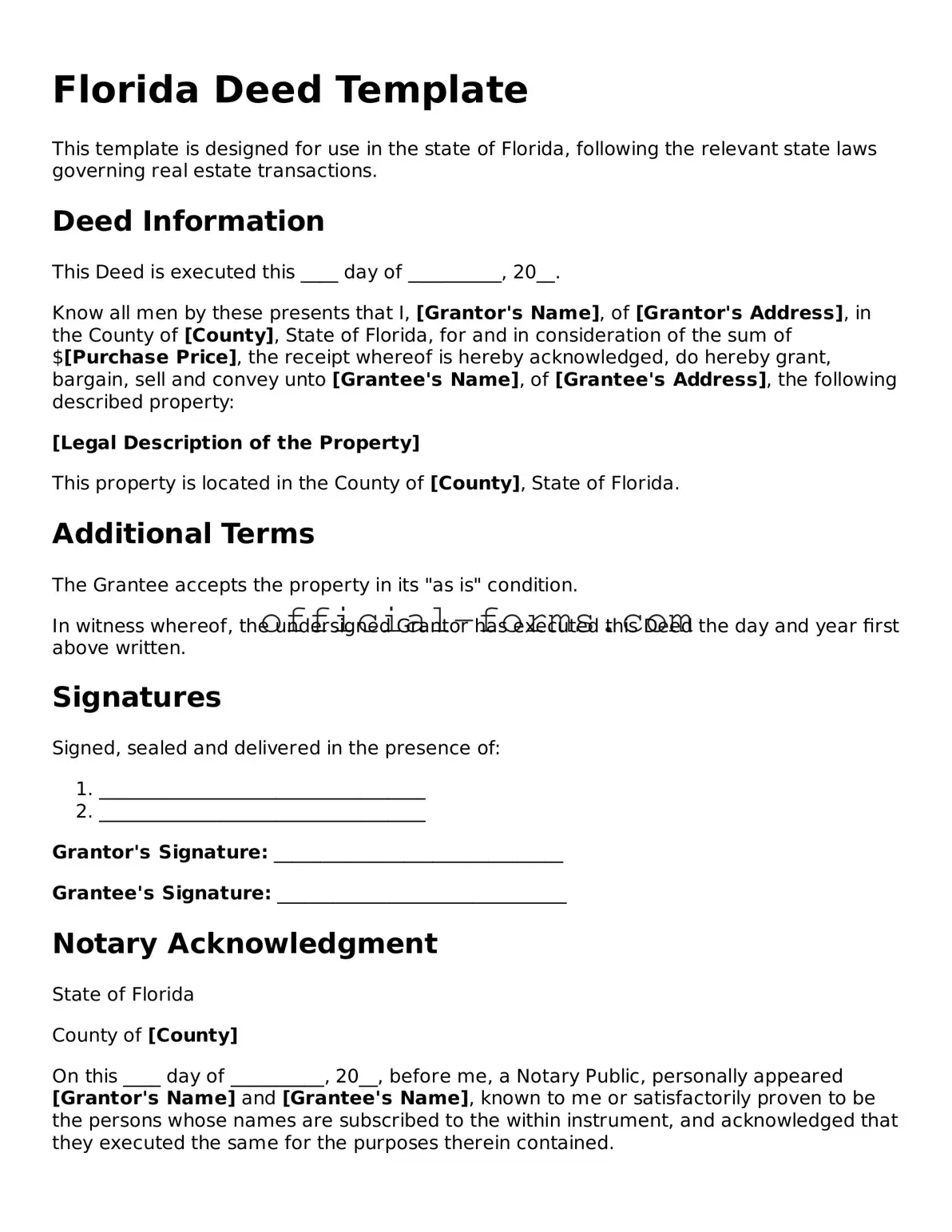Completing the Florida Deed form can be a straightforward process, but several common mistakes can lead to complications. One frequent error is failing to include all required parties. It is essential to list both the grantor and grantee correctly. Missing one of these parties can render the deed invalid.
Another common mistake involves incorrect property descriptions. The legal description must be accurate and match the property’s title. Errors in this section can cause confusion and may lead to disputes over property boundaries.
People often overlook the need for notarization. In Florida, a deed must be signed in the presence of a notary public. Without this step, the deed may not be legally recognized. It is crucial to ensure that the notary's signature and seal are present on the document.
In addition, many individuals fail to check for proper execution of the deed. All signatures must be executed in accordance with Florida law. This includes ensuring that witnesses, if required, are present during the signing process.
Another mistake involves not recording the deed after completion. Even if the deed is properly filled out and signed, it must be recorded with the county clerk's office to provide public notice of ownership. Neglecting this step can lead to issues with future property transactions.
Some individuals may also use outdated forms. Laws and requirements can change, so it is important to use the most current version of the Florida Deed form. Using an outdated form can lead to legal complications.
People sometimes forget to include the correct tax information. Florida may impose documentary stamp taxes on the transfer of property. Failing to account for these taxes can result in unexpected costs or penalties.
Lastly, individuals may not seek assistance when needed. Filling out a deed can be complex, and seeking help from a qualified professional can prevent mistakes. Ignoring this option can lead to errors that may have been easily avoided.
